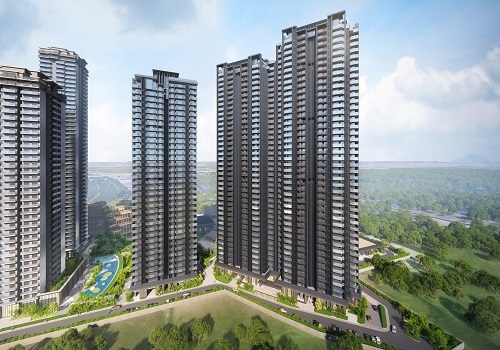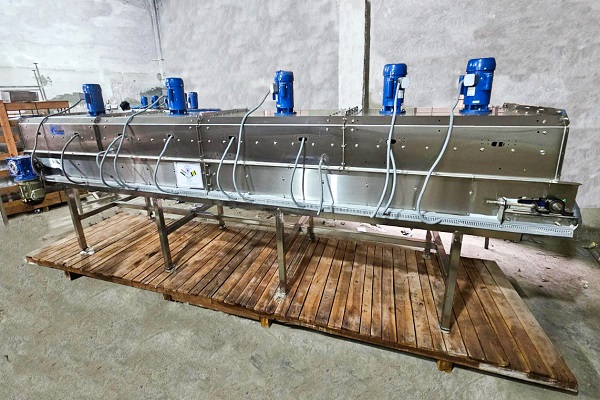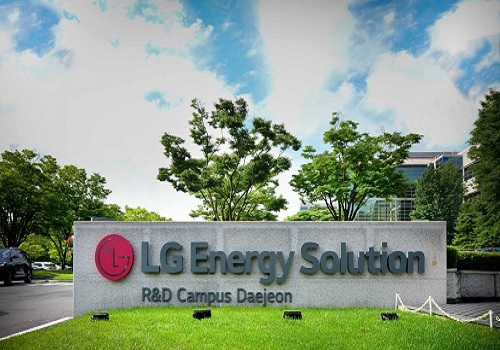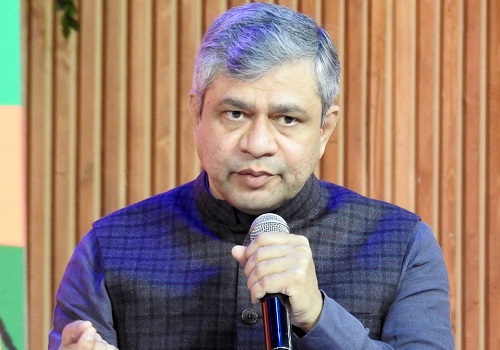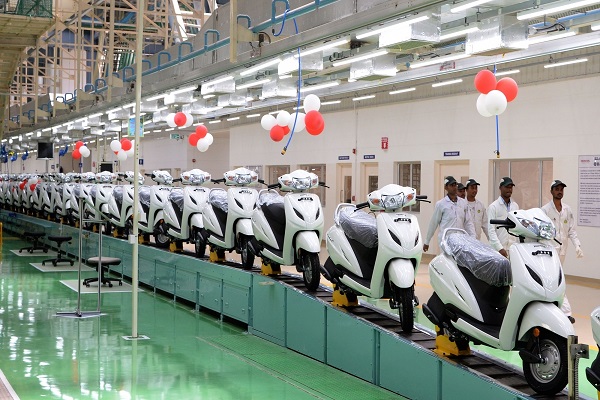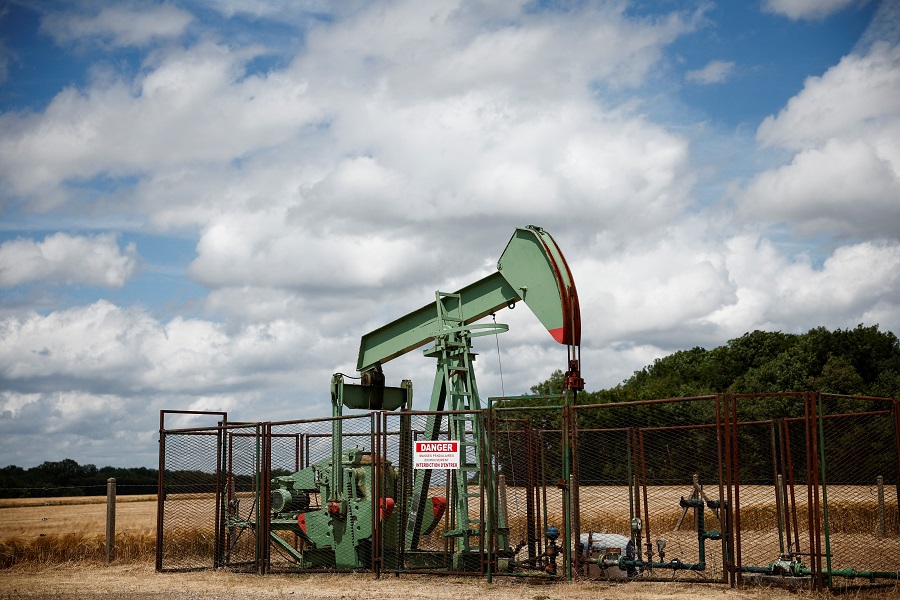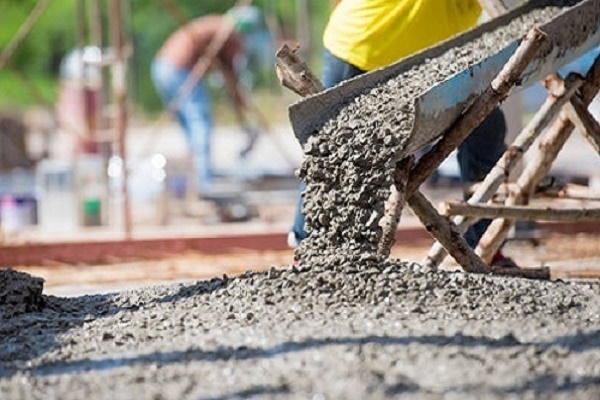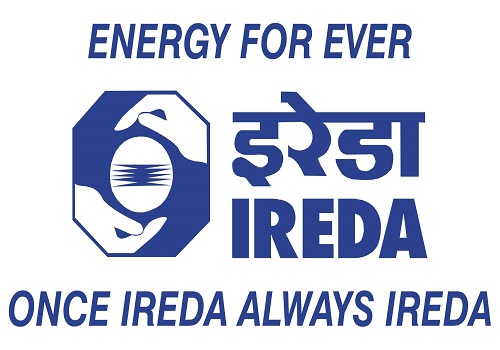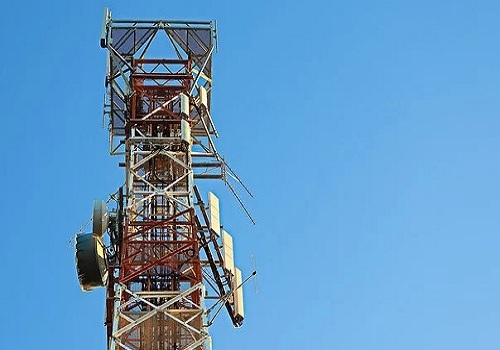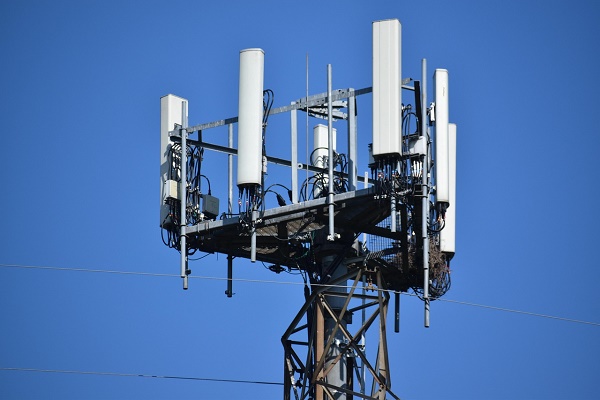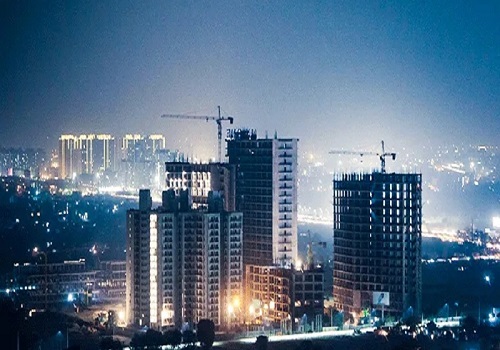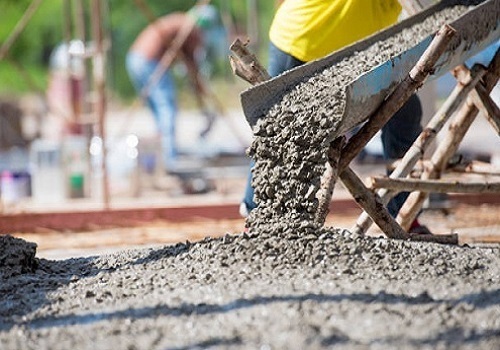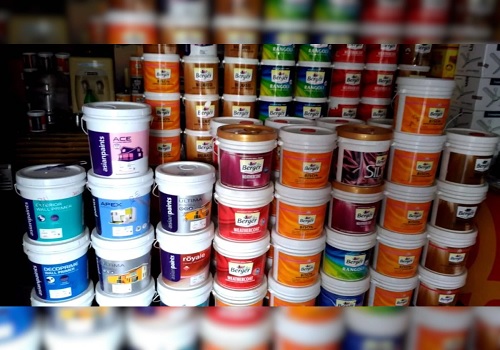Telecom Sector Update : Bharti/Jio: FCF growth story on track amidst tariff hikes & capex normalisation By JM Financial Services
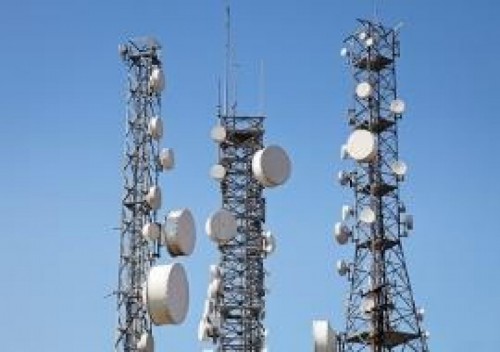
Bharti/Jio: FCF growth story on track amidst tariff hikes & capex normalisation
We continue to expect telcos’ ARPU to grow at ~12% CAGR in the next 3-5 years given the consolidated industry structure, to ensure a ‘3+1’ player market and higher ARPU requirement for Jio not only to justify its significant 5G capex but also given its potential listing plans. Hence, we expect the industry ARPU to grow at ~12% CAGR to INR 290-320 by FY28 (via tariff hikes, MBB upgrades, post-paid additions and data monetisation) for a pre-tax RoCE of 12-15%. The next tariff hike of ~15% is most likely in CY26 (i.e. ~2 years after Jul’24 tariff hike); however, a near-term tariff hike can’t be ruled out given Jio’s potential listing plans and the central government’s (GoI) intent to ensure a 3+1 player market. Bharti/Jio 5G subs penetration has risen to 37-39%; 5G monetisation is a potential opportunity in future but is currently limited via tariff hike, push towards high ARPU plans, reduction in cost/GB of data and FWA rollouts. With pan-India rollout of 5G achieved by Dec’23 (for Jio) and Mar’24 (for Bharti and BHL), both Bharti and Jio’s capex hit a peak in FY24 and moderated in FY25 with guidance of FY26 capex likely to be even lower than FY25 with long-term capex to sales ratio likely to stabilise ~15-20% of revenue. Thus, we estimate that Bharti’s India business FCF will rise to ~INR 421bn/ INR 474bn in FY26/FY27 (vs. INR 316bn in FY25) and Jio’s FCF could rise to INR 388bn/ INR 457bn in FY26/FY27 (from ~INR 247bn in FY25); Bharti/BHL/Jio are likely to get to net cash position by FY29-30. We reiterate BUY on Bharti; we also maintain our BUY on BHL and our positive view on Jio. We maintain HOLD on VIL and Indus, and reiterate BUY on TCOM on expectation of improvement in profitability of the digital portfolio segment.
* Jio's EBITDA grew 2.5% QoQ aided by residual pass-through of Jul'24 tariff; Bharti wireless/BHL EBITDA up 1.9%/1.6% QoQ on robust subs gains while VIL's EBITDA down 1.1% QoQ on subs loss: Jio, Bharti and BHL witnessed a healthy quarter despite 2 less days QoQ while VIL’s EBITDA declined 1.1% QoQ in 4QFY25 on continued subs loss. Bharti continued to lead with ARPU of INR 245 (flat QoQ) followed by BHL with INR 242 (up 0.4% QoQ); Jio had an ARPU of INR 206 (up 1.4% QoQ) or ~INR 194 ex-FTTH, while VIL had ARPU (including M2M subs) of INR 164 (up 0.6% QoQ). Further, the residual pass-through of the Jul'24 tariff hike is likely to be visible in 1QFY26 as well for Jio given more of its subscribers are on long-duration plans (unlike other telcos, for whom it flowed through by 3QFY25 itself given limited subscribers are on long-duration plans). Further, Jio, Bharti and BHL added 6.1mn, 5mn and 0.5mn subs respectively in 4QFY25. However, VIL continued to lose net subs though the subs loss moderated QoQ to 1.6mn in 4QFY25 (vs. subs loss of 5.2mn in 3QFY25 and 5.1mn in 2QFY25). Hence, Jio's EBITDA was up 2.5% QoQ; Bharti India wireless EBITDA was up 1.9% QoQ; and BHL's EBITDA was up 1.6% QoQ; while VIL's EBITDA was down 1.1% QoQ — (Exhibit 13-18).
* ARPU continues to be on a structural uptrend as industry needs ARPU to grow at ~12% CAGR to INR 290-320 by FY28 to justify huge investments: We continue to believe India wireless ARPU is on a structural uptrend given the consolidated industry structure, to ensure a ‘3+1’ player market and higher ARPU requirement for Jio not only to justify its significant 5G capex but also given its potential listing plans. Jio also affirmed this by leading the last round of tariff hike in Jul’24 (vs. being a reluctant follower of tariff hikes in the past), leading to improved outlook for future tariff hikes. ARPU in India is still one of the lowest in the world at ~USD 2.4/month vs. the global average of USD 8-10/month (USD 7.1/month in China); India’s ARPU to GDP per capita is low at ~1.0% in FY25 vs. +1.5% before FY15 — Exhibit 5-8. Our calculation suggests the industry requires ARPU to grow at ~12% CAGR to INR 290-320 by FY28 to earn pre-tax RoCE of 12-15% (vs. current industry RoCE still being below 10%) to justify huge investment needs of the industry. We believe industry’s ARPU CAGR of 11-13% over the next 3-5 years is likely to be driven by: a) 3-5% CAGR due to MBB upgrade, post-paid additions and data monetisation; and b) 6-8% CAGR due to a regular tariff hike; this is likely to drive 13-17% EBITDA CAGR over FY25-28.
* Next tariff hike of ~15% most likely in CY26 (~2 years after Jul’24 tariff hike); however, prospect of near-term tariff hike can’t be ruled out given Jio’s potential listing plans and GoI intent to ensure a 3+1 player market: We believe the next tariff hike of ~15% is mostly likely in CY26, around 2 years after the last ~15% tariff hike in Jul’24 as seen in the past (where we saw tariff hike in gap of ~2 years). However, the prospects of a near-term tariff hike can’t be ruled out given: a) Jio’s potential listing plans in the near to medium term; and b) government of India’s (GoI) intent to ensure a 3+1 player market. Given Supreme Court (SC) rejection of VIL’s AGR waiver petition, accelerated tariff hike and extension of spectrum/AGR moratorium (expiring in Sep’25) are possible options in front of GoI to ensure VIL’s long-term sustainability; this might be critical to ensure VIL’s long pending INR 250bn debt-raise goes through (which is key for execution of INR 500bn-550bn capex, in its attempt to arrest subscriber decline and grow in line with the industry).
* Repair of industry tariff structure is likely to drive APRU growth in long-term amidst limited scope for tariff hike for entry level subscribers: Industry’s tariff structure is broken as the current one size fits all tariff structure (i.e., tariff remains the same despite a large range of data usage) doesn’t incentivise the customer to upgrade to higher APRU plans; this leads to telcos being forced to hike tariff for all subscribers in its effort to boost its ARPU. The current tariff structure was introduced by Jio since its entry in 2016 with an objective to significantly boost customer’s data usage patterns and increase customer stickiness by allowing customer unlimited data usage at a minimal cost (cost/GB declining to ~INR 10/GB vs. over INR 250/GB pre Jio’s entry). Given these objectives are largely achieved, with customer data usage having jumped to ~28GB/month (from 1GB/month pre Jio’s entry) and limited SIM consolidation witnessed despite sharp tariff hikes in last few years, we believe the industry has now reasonable pricing power to switch back to ‘pay as you use’ tariff structure so that customers who use more data end up paying more (vs. the current regime where tariff is the same despite a large range of data usage). This is likely to allow telcos to go for a minimal hike in entry level tariff (given limited ability to pay in this segment and as customers use phone for only connectivity service with limited use of other services), while reducing data allowance on existing low end data pack, effectively charging more to customers who have the ability to pay more. Bharti and VIL’s management reiterated this as well during the recent 4QFY25 concall, with Bharti’s management also highlighting that if entry level wireless pricing in India is indexed at 100, then the highest tariff plan in India will be indexed at 250 while it is significantly higher at 500 in other similar emerging markets like Indonesia, etc.
* Bharti/Jio 5G subs penetration rises to 37-39%; 5G monetisation a potential opportunity in future but currently limited via tariff hike, push towards high ARPU plans, reduction in cost/GB of data and FWA rollouts: 5G penetration continued to improve to ~37-39% for Jio and Bharti during 4QFY25 with ~191mn 5G subs for Jio (vs. 170mn in 3QFY25) and ~135mn 5G subs for Bharti (vs. 120mn in 3QFY25), aided by improved affordability of 5G smartphones; Jio’s 5G network is now carrying 45% of Jio’s wireless data traffic. In absence of killer 5G use-cases and 5G smartphone affordability constraints, 5G monetisation has been limited so far except via: a) an overall tariff hike; b) push towards high ARPU plans (Jio and Bharti offer unlimited 5G data on plans with minimum 2GB daily data allowance, starting INR 349 for Jio and INR 379 for Bharti); c) lower cost/GB of data consumed; and d) aggressive rollout of FWA services. Given the rising 5G penetration and subscribers getting accustomed to usage of high speed 5G data, there is a potential to monetise 5G in future via charging a premium pricing; any development of killer 5G use-case could accelerate the monetisation journey.
* Strong home broadband subscriber growth continues driven by aggressive FWA roll-out; Jio dominates with ~82% market share in FWA: Jio saw strong FTTH/FWA addition of ~1.5mn subs in 4QFY25 (with 18.1mn subs at end-4QFY25) while Bharti saw addition of 812k subs during the quarter (with 10.0mn FTTH/FWA subs at end-4QFY25). Jio’s 5G FWA (i.e., JioAirFiber) is now available pan-India and is witnessing healthy demand even in Tier 2 towns and beyond, and the Jio management aims to connect 100mn homes via FTTH/FWA at record speed while Bharti continued with its gradual rollout of 5G FWA across ~200 cities. JioAirFiber continues to see strong uptake and engagement pan-India and now has over 5.6mn JioAirFiber connections at end-4QFY25 (vs. over 4.5mn at end-3QFY25) and continues to lead the segment with ~82% market share while Bharti holds ~18% market share.
* Bharti, Jio and BHL’s FCFF to continue to grow driven by capex normalisation and structural growth in ARPU; dividend payout likely to grow sharply in next few years: With pan-India rollout of 5G achieved by Dec’23 (for Jio) and Mar’24 (for Bharti and BHL), both Bharti and Jio’s capex hit a peak in FY24 and moderated in FY25 with long-term capex to sales ratio likely to stabilise ~15-20% of revenue (in line with its global peers) vs. capex being high at 30-50% of revenue in the last 2-3 years. Bharti’s India business capex has already moderated to INR 303bn in FY25 vs. peak capex of INR 334bn in FY24; and management is guiding that FY26 capex is likely to be lower than FY25. However, we continue to conservatively build in Bharti’s India business capex at ~INR 310bn/INR 316bn for FY26/FY27 as it faces an upside risk to its capex in the long term when it transitions to a standalone 5G network for its wireless business; however, this transition is likely to take place over the next 3-5 years as high speed low latency 5G use case gets developed for the wireless business. Separately, we have built in Jio’s capex at ~INR 300bn-350bn p.a. in FY25/FY26 (vs. cash flow capex of INR 489bn/INR 415bn in FY24/FY25 in the last 2 years). Hence, aided by the structural ARPU uptrend, we expect Bharti’s India business FCF to rise to ~INR 421bn/ INR 474bn in FY26/FY27 (from ~INR 316bn in FY25), Jio’s FCF to rise to ~INR 388bn/ INR 457bn in FY26/FY27 (from ~INR 247bn in FY25) and BHL’s FCF to rise to ~INR 33bn/ INR 35bn in FY26/FY27 (from ~INR 31bn in FY25) — Exhibit 12. This is likely to result in strong growth in dividend payout by Bharti/BHL in the next few years, as indicated by the management as well.
* Reiterate BUY on Bharti; also maintain our BUY on BHL and positive view on Jio: We have raised Bharti’s FY26-27 consolidated EBITDA estimate by ~10% accounting for Indus consolidation (was earlier accounted as an associate); hence, there is a marginal 0-1% increase in PAT estimate and a slight increase in TP to INR 2,050 (from INR 2,035). As detailed in our Deep-Dive note (Biggest beneficiary of structural ARPU growth story), we reiterate our BUY rating on Bharti Airtel (1 year TP of INR 2,050, and 3-year TP of INR 2,775 implying a 3-year IRR potential of ~14% — Exhibit 45-46) as we believe India wireless business tariff hikes are likely to be more frequent given the consolidated industry structure, and higher ARPU requirement for Jio not only to justify its significant 5G capex but also given its potential listing plans. Bharti is the biggest beneficiary of higher tariffs given the sticky and premium quality of its subs. We expect Bharti’s India wireless ARPU to grow at a CAGR of ~11% to +INR 310 in FY28 driving consolidated EBITDA CAGR of ~15% over FY25-28. ARPU growth aided by likely moderation in capex will continue to drive Bharti’s FCF, enabling it to get to net cash by FY30; this will also aid in accretion in equity value. However, there is a possibility of continued stake sale by promoters to outside investors, which could be a near-to-medium term overhang as Singtel (effective stake at ~28.3%) and the Mittal family (effective stake at ~22.9%) plan to equalise their stake over a period of time – Exhibit 48. Similarly, we maintain our BUY on BHL (unchanged 1-year TP of INR 1,795, and 3-year TP of INR 2,445 implying a 3-year IRR potential of 10% — Exhibit 50-51) as we see BHL as a midcap pure-play on the wireless ARPU growth story. We also maintain our positive view on Jio — Exhibit 54).
* Maintain HOLD on VIL and Indus; reiterate BUY on TCOM on expectation of improvement in profitability of digital portfolio segment: We maintain HOLD on VIL (unchanged TP of INR 9). Key monitorables that can pose upside risks to our estimates/valuation are: a) further relief from government dues either via partial waiver of AGR dues and/or allowing surrender of pre-2022 spectrum, conversion of more dues to equity and extension of moratorium; b) multiple sharp tariff hikes that can result in VIL’s blended ARPU being significantly above our estimate of INR 183/207/229 in FY26/27/28 vs. INR 164 in 4QFY25; and c) VIL’s subscriber growth being significantly above our assumption of 1% growth p.a. at 200/202/204mn in FY26/27/28 vs. 198mn in 4QFY25 (Exhibit 56-57). However, there could be downside risk to our estimates/valuation if VIL is not able to arrest its subscriber decline and/or tariff hikes are lower than expected. Further, we maintain HOLD on Indus Tower (unchanged TP of INR 370) due to risk of a duopoly market (Exhibit 59-60). Separately, we reiterate BUY on TCOM with unhanged TP of INR 2,000 (Initiation note - Pivoting from Connectivity to CommTech) as we expect robust data segment EBITDA growth over FY25–28E driven by strong growth in its digital portfolio, led by improvement in its profitability (Exhibit 61-62).
ARPU on a structural uptrend as industry needs ARPU to rise to INR 290-320 by FY28 to earn a respectable 12-15% RoCE
With the consolidation of India’s telecom industry largely complete, we expect the wireless industry’s revenue to grow further, at ~13% CAGR to ~INR 3,900bn by FY28E, and at ~11% CAGR to +INR 4,600bn by FY30E vs. ~INR 2,740bn in FY25. It has already more than doubled from a low of ~INR 1,200bn in FY19 (Exhibit 3) due to continued structural uptrend in industry ARPU driven by the industry’s need to earn a respectable ~15% RoCE on huge investments already made in the business (including huge 5G capex) and future investment needs.
Please refer disclaimer at https://www.jmfl.com/disclaimer
SEBI Registration Number is INM000010361

